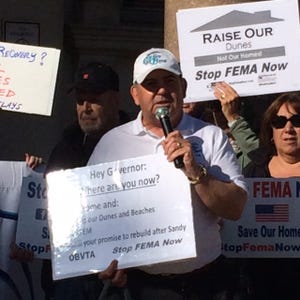BRICK – Sen. Robert Menendez had a message Monday for an audience of Sandy survivors skeptical about reopening their flood insurance claims: the process is designed to be both efficient and fair.
“I believe this is an opportunity to get it right this time, and to put money in people’s pockets who deserve it,” said Menendez, D-N.J. He was speaking at a forum sponsored by Legal Services of New Jersey and Volunteer Lawyers for Justice, two groups that offer free legal help to storm victims who are considering whether to participate in the flood insurance review process.
“You deserve an insurance system that works for you. You deserve better,” Menendez told an audience of Sandy survivors and nonprofit employees.
In March, the Federal Emergency Management Agency announced that 142,000 Sandy victims would get a second chance at making a flood insurance claim if they felt they had been cheated by their flood insurance provider. About 73,000 of those victims live in New Jersey.
The review was ordered by FEMA after evidence emerged of a potentially widespread scheme to fundamentally change the engineering reports that insurance companies rely on to determine if a structural damage claim is paid out.
Reports that blamed the post-Sandy damage on earth movement or house settling were often used to deny coverage.
Possible fraud aside, homeowners on the Shore and elsewhere have complained that they were lowballed by their insurers.




